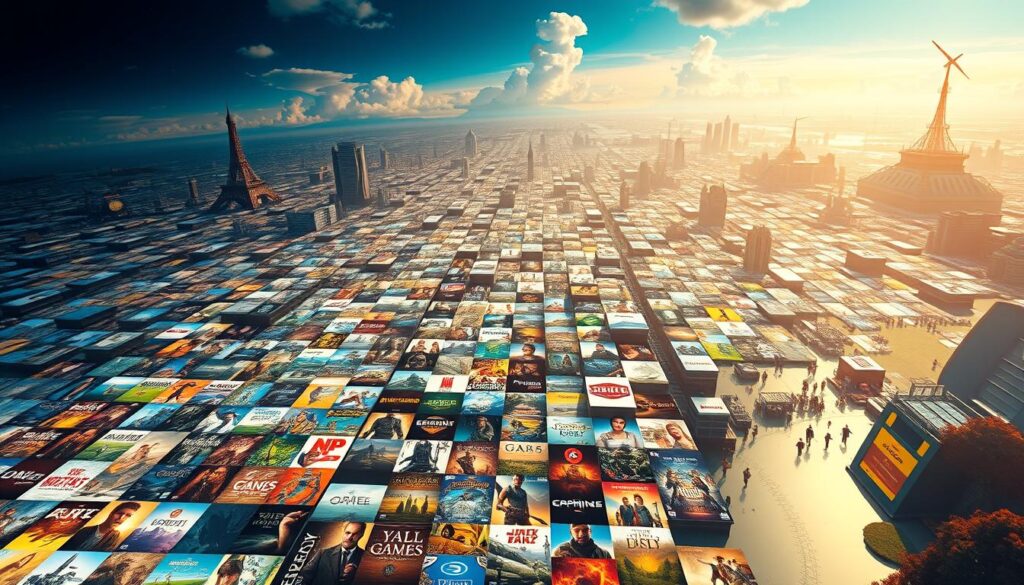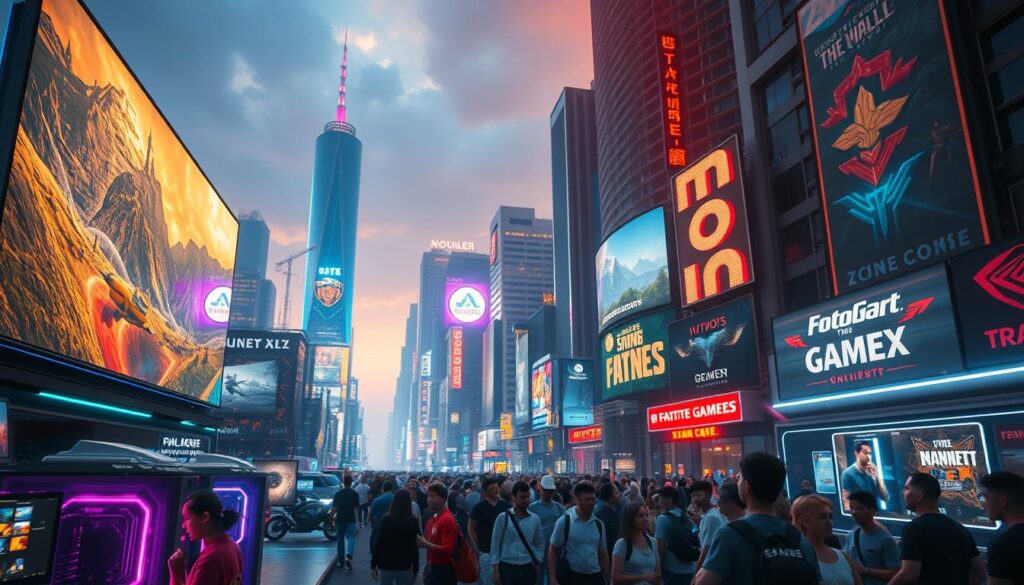Gaming on a low-end PC can be challenging, especially when it comes to resource-intensive games like PUBG Mobile. Many gamers face issues with lag, making it difficult to enjoy a smooth gaming experience. However, with the right optimization techniques, it’s possible to play PUBG Mobile on a low-end PC without the frustration of lag.
The key to a seamless gaming experience lies in optimizing your PC’s settings and using the right PUBG Mobile emulator. By doing so, you can significantly improve your gaming performance, even on a low-end PC. This article will guide you through the steps to achieve low-end PC gaming without compromising on performance.
Key Takeaways
- Optimize your PC settings for better performance.
- Use a reliable PUBG Mobile emulator.
- Adjust in-game settings for smoother gameplay.
- Update your graphics drivers regularly.
- Close unnecessary background applications.
Understanding the Challenges of Running PUBG Mobile on Low-End PCs
The challenge of playing PUBG Mobile on low-end PCs lies in overcoming the hurdles of emulation and hardware limitations. PUBG Mobile is designed for mobile devices, and running it on a PC requires an emulator that can translate mobile operations into PC-compatible inputs.
Why Mobile Games Need Emulation on PC
Emulation is crucial because it allows mobile games like PUBG Mobile to run on PC hardware. An emulator acts as a bridge, enabling the game to utilize PC resources such as CPU, RAM, and GPU, thereby enhancing the gaming experience. However, this process can be resource-intensive and demands a certain level of hardware capability.
Common Performance Bottlenecks on Older Hardware
Older hardware often faces performance bottlenecks, including limited CPU power, insufficient RAM, and outdated graphics cards. These limitations can lead to lag, stuttering, and crashes when running demanding games like PUBG Mobile through an emulator.
The Emulator vs. Hardware Balance
Achieving a balance between emulator settings and hardware capabilities is vital. Tweaking emulator settings can help optimize performance on low-end PCs. For instance, reducing graphics quality or limiting frame rates can mitigate some performance issues. As one PUBG Mobile developer noted,
“Optimizing for lower-end hardware is a delicate balance between performance and player experience.”
Understanding these challenges is the first step towards finding solutions to play PUBG Mobile on low-end PCs without significant lag or performance issues.
Minimum System Requirements for Smooth PUBG Mobile Gameplay
For a seamless PUBG Mobile gaming experience on PC, certain system requirements must be met. Understanding these requirements is essential to ensure that your computer can handle the game without compromising performance.
CPU Requirements and Recommendations
The CPU is the brain of your computer, and for PUBG Mobile, a decent processor is necessary. A minimum of Intel Core i3 or AMD equivalent is recommended for smooth gameplay. Newer processors will provide better performance and efficiency.
RAM and Storage Specifications
RAM (Random Access Memory) is crucial for running applications smoothly. For PUBG Mobile on PC, at least 4GB of RAM is recommended, but 8GB or more is ideal for better performance. Storage-wise, ensure you have enough free space; PUBG Mobile requires around 2GB of storage, but additional space is needed for emulator installations.
Graphics Card Minimum Standards
A dedicated graphics card is not always necessary, but it significantly enhances gaming performance. For PUBG Mobile, a graphics card like NVIDIA GeForce GTX 1060 or AMD Radeon RX 580 is considered a good starting point.
Internet Connection Requirements
A stable internet connection is vital for online gaming. For PUBG Mobile, a minimum internet speed of 4 Mbps is recommended for smooth gameplay, but higher speeds will reduce lag and improve overall gaming experience.
| Component | Minimum Requirement | Recommended |
|---|---|---|
| CPU | Intel Core i3 | Intel Core i5 or AMD equivalent |
| RAM | 4GB | 8GB or more |
| Graphics Card | NVIDIA GeForce GTX 1050 | NVIDIA GeForce GTX 1060 or AMD Radeon RX 580 |
| Internet Speed | 4 Mbps | 10 Mbps or higher |
Choosing the Right Emulator for Your PC Specs
Selecting the ideal emulator is crucial for a seamless PUBG Mobile experience on your PC. With several options available, each with its strengths and weaknesses, it’s essential to compare them based on your PC’s specifications.
GameLoop (Tencent Gaming Buddy): Official and Optimized
GameLoop, also known as Tencent Gaming Buddy, is the official emulator for PUBG Mobile. It’s optimized for PUBG Mobile and offers a smooth gaming experience. GameLoop is designed to work efficiently with a wide range of PC configurations.
BlueStacks: Feature-Rich but Resource-Heavy
BlueStacks is a popular emulator known for its feature-rich interface. However, it’s also known to be resource-heavy, which might not be ideal for low-end PCs.
LDPlayer: Balanced Performance for Low-End Systems
LDPlayer is another emulator that offers a balanced performance, making it suitable for low-end systems. It’s optimized for performance and can run PUBG Mobile smoothly on PCs with lower specs.
MEmu Play: Lightweight Alternative
MEmu Play is a lightweight emulator that’s designed to be efficient. It’s a good option for those with lower-end PCs looking to play PUBG Mobile without significant lag.
Comparison Chart of Emulator Resource Usage
| Emulator | RAM Usage | CPU Usage | Graphics Support |
|---|---|---|---|
| GameLoop | 2GB | Medium | High |
| BlueStacks | 4GB | High | High |
| LDPlayer | 1.5GB | Low-Medium | Medium |
| MEmu Play | 1GB | Low | Medium |
By comparing these emulators, you can choose the one that best fits your PC’s specifications, ensuring a smooth PUBG Mobile gaming experience.
How to Play PUBG Mobile on Low-End PC Without Lag
With the right emulator and settings, you can play PUBG Mobile on your low-end PC without experiencing lag. The key is to optimize both the emulator and in-game settings for the best performance.
Step-by-Step Emulator Installation Guide
First, you need to choose and install a suitable emulator. Popular options include GameLoop, BlueStacks, and LDPlayer. For this guide, we’ll use GameLoop. Visit the official GameLoop website, download the installer, and run it. Follow the on-screen instructions to complete the installation.
PUBG Mobile Download and Setup Process
Once the emulator is installed, open it and search for “PUBG Mobile.” Click on the game to download and install it. After installation, launch PUBG Mobile from the emulator’s home screen.
Initial Configuration for Optimal Performance
To minimize lag, adjust the emulator’s performance settings. Allocate appropriate CPU and RAM resources. For low-end PCs, it’s recommended to allocate at least 2 CPU cores and 4GB of RAM. Save your changes and restart the emulator.
Control Setup for PC Gaming
For a better gaming experience, configure the controls. Open PUBG Mobile, go to settings, and adjust the control layout to your preference. You can also customize the sensitivity and button layout for optimal gameplay.
By following these steps, you can enjoy PUBG Mobile on your low-end PC with minimal lag. Ensure your PC meets the minimum system requirements and keep your emulator and drivers updated for the best experience.
Optimizing Emulator Settings for Maximum Performance
To get the most out of your PUBG Mobile gaming experience on a low-end PC, optimizing your emulator settings is crucial. A well-configured emulator can significantly reduce lag and improve overall gameplay.
CPU Core and Thread Allocation
Allocating the right number of CPU cores and threads to your emulator is vital for smooth gameplay. Most modern CPUs have multiple cores, and assigning at least two to your emulator can enhance performance. As Tencent Games recommends, allocating more CPU resources can lead to a better gaming experience.
RAM Management and Virtual Memory
Managing RAM effectively is crucial for emulator performance. Allocating at least 4GB of RAM to your emulator is recommended, but if you have more available RAM, allocating more can be beneficial. Additionally, ensuring that your virtual memory is set up correctly can help prevent crashes during intense gaming sessions.
Display Resolution and DPI Settings
Lowering the display resolution within the emulator can significantly improve performance. Setting the DPI to a lower value can also help, as it reduces the graphical load on your system.
Graphics Rendering Mode Selection
Choosing the right graphics rendering mode is essential. Options like “DirectX” or “OpenGL” can offer different performance levels depending on your system’s hardware. Experimenting with these settings can help you find the optimal configuration.
Advanced Emulator Tweaks
Advanced users can further tweak their emulator settings by adjusting additional parameters such as frame rate limit, vsync, and more. As one gaming forum user noted, “Tweaking these advanced settings can make a noticeable difference in performance.”
By carefully optimizing these emulator settings, you can enjoy a smoother and more responsive PUBG Mobile gaming experience on your low-end PC.
In-Game Settings to Reduce Lag and Boost FPS
For a lag-free PUBG Mobile experience on low-end PCs, understanding and adjusting in-game settings is essential. Optimizing these settings can significantly improve gameplay, making it smoother and more enjoyable.
Graphics Quality Adjustments
Lowering the graphics quality is one of the most effective ways to reduce lag. PUBG Mobile offers various graphics settings, from low to ultra. Setting it to “Low” or “Medium” can help achieve a better frame rate.
Frame Rate Options and Stability
Increasing the frame rate can enhance the gaming experience. PUBG Mobile allows players to adjust the frame rate according to their device’s capabilities. For low-end PCs, setting the frame rate to “Medium” or “High” can provide a good balance between performance and visual quality.

Render Quality and View Distance
Render quality affects how the game renders graphics, while view distance impacts how far into the distance the game renders objects. Lowering these settings can reduce the load on the GPU, improving performance.
| Setting | Low-End PC Recommendation | Impact on Performance |
|---|---|---|
| Graphics Quality | Low/Medium | Reduces GPU load |
| Frame Rate | Medium/High | Improves smoothness |
| Render Quality | Low | Reduces GPU load |
| View Distance | Medium | Balances visual quality and performance |
Shadows and Texture Settings
Shadows and texture settings can also impact performance. Lowering these settings can help reduce lag. Shadows, in particular, can be demanding on the GPU, so disabling or reducing them can improve frame rates.
Audio Settings Impact on CPU Usage
While audio settings might not directly impact frame rates, they can affect overall CPU usage. Disabling unnecessary audio effects or reducing audio quality can help allocate more resources to the game, potentially improving performance.
Windows Optimizations for Better Gaming Performance
Windows optimization is crucial for reducing lag and improving overall gaming performance on low-end hardware. By making a few tweaks to your system settings, you can enjoy a smoother gaming experience without the need for expensive hardware upgrades.
Disabling Unnecessary Background Services
One of the simplest ways to improve gaming performance is by disabling unnecessary background services. To do this, press Ctrl + Shift + Esc to open Task Manager, then navigate to the “Startup” tab and disable any programs you don’t need running in the background.
- Disable unnecessary startup programs
- Close background applications
- Stop non-essential system services
Windows Game Mode and Focus Assist
Windows 10 introduced Game Mode, a feature designed to optimize your system for gaming by allocating more system resources to your games and reducing the impact of background tasks. To enable Game Mode, go to Settings > Gaming > Game Mode. Additionally, enabling Focus Assist can help minimize distractions during gaming sessions.
Virtual Memory and Paging File Adjustments
Adjusting your virtual memory settings can also improve performance. To do this, go to Control Panel > System and Security > System > Advanced system settings, then under Performance, click Settings, and navigate to the Advanced tab. Here, you can adjust the virtual memory settings to better suit your needs.
Graphics Driver Updates and Optimization
Keeping your graphics drivers up to date is essential for optimal gaming performance. Regularly check for updates from your graphics card manufacturer and install the latest drivers. Additionally, consider using software that can optimize your graphics settings for the best performance.
Disk Cleanup and Defragmentation
Performing regular disk cleanup and defragmentation can help maintain your system’s performance. Use the built-in Disk Cleanup tool to remove temporary files and other items you don’t need. For disk defragmentation, use the Defragment and Optimize Drives tool.
By implementing these Windows optimizations, you can significantly improve your PUBG Mobile gaming experience on low-end PCs.
Budget Hardware Upgrades That Make the Biggest Difference
For a smoother PUBG Mobile experience on PC, consider budget-friendly hardware upgrades. Upgrading specific components can significantly enhance your gaming performance without breaking the bank.
RAM Upgrades: How Much You Really Need
Adding more RAM can improve your PC’s multitasking capabilities and reduce lag. For PUBG Mobile, a minimum of 8GB RAM is recommended, but 16GB or more is ideal for smoother performance.
SSD Installation for Faster Loading Times
Replacing your traditional hard drive with a Solid-State Drive (SSD) can drastically reduce loading times. SSD is a cost-effective way to boost overall system performance.

Affordable Graphics Card Options
Upgrading your graphics card can significantly improve graphics quality. Look for affordable graphics cards that support your monitor’s resolution.
Cooling Solutions for Thermal Throttling
Thermal throttling can severely impact performance. Invest in a good cooling system to keep your components at optimal temperatures.
Troubleshooting Common Lag and Performance Issues
If you’re struggling with lag or stuttering while playing PUBG Mobile on your low-end PC, several troubleshooting steps can help. Performance issues can arise from various factors, including emulator settings, in-game configurations, and system specifications.
Fixing Stuttering and Frame Drops
Stuttering and frame drops can be caused by inadequate system resources or improper emulator settings. To fix this, try:
- Reducing the graphics quality in the emulator and in-game settings.
- Closing unnecessary background applications to free up RAM and CPU.
- Adjusting the frame rate cap to a lower value to reduce the strain on your GPU.
Resolving Emulator Crash Problems
Emulator crashes can be frustrating. To resolve this issue:
- Ensure your emulator is updated to the latest version.
- Check if your PC meets the minimum system requirements for the emulator.
- Try reinstalling the emulator or switching to a different emulator.
Network Optimization for Stable Online Play
A stable network connection is crucial for online gaming. To optimize your network:
- Use a wired Ethernet connection instead of Wi-Fi for better stability.
- Close bandwidth-intensive applications running in the background.
- Configure your router’s Quality of Service (QoS) settings to prioritize gaming traffic.
Dealing with Input Lag and Controls
Input lag can significantly affect your gaming experience. To minimize input lag:
- Use a gaming-grade controller or keyboard and mouse setup.
- Adjust the control sensitivity settings within the game and emulator.
- Ensure your input devices are properly configured and updated.
Compatibility Issues with Windows Versions
Sometimes, compatibility issues with your Windows version can cause problems. To address this:
- Check if your Windows version is compatible with the emulator.
- Update your Windows to the latest version.
- Run the emulator in compatibility mode if necessary.
Conclusion
Playing PUBG Mobile on low-end PC without lag is achievable by following the right optimization techniques. By understanding the challenges of running PUBG Mobile on older hardware and choosing the right emulator, you can enjoy a seamless gaming experience.
Optimizing emulator settings, in-game configurations, and Windows settings can significantly improve performance. Upgrading budget hardware components, such as RAM and SSD, can also make a substantial difference. By implementing these strategies, you can enjoy no lag gaming on your low-end PC.
In summary, playing PUBG Mobile on low-end PC requires a combination of the right emulator, optimized settings, and some hardware tweaks. By following the optimization summary provided in this article, you can enjoy a smooth and immersive gaming experience. With these tips, you can dive into the world of PUBG Mobile without worrying about performance issues.
FAQ
What are the minimum system requirements for playing PUBG Mobile on PC?
The minimum system requirements include a CPU with at least 2 cores, 4GB of RAM, a graphics card that supports OpenGL 3.0 or higher, and a stable internet connection.
Which emulator is best for playing PUBG Mobile on low-end PCs?
Popular emulators for PUBG Mobile include GameLoop, BlueStacks, LDPlayer, and MEmu Play. LDPlayer is known for its balanced performance on low-end systems.
How can I optimize my emulator settings for better performance?
To optimize emulator settings, allocate CPU cores and threads according to your PC’s capabilities, manage RAM effectively, adjust display resolution and DPI settings, and choose the right graphics rendering mode.
What in-game settings can I adjust to reduce lag and improve FPS?
Adjusting graphics quality, frame rate options, render quality, and texture settings can help reduce lag and improve FPS. Additionally, consider turning off unnecessary features like shadows.
How can I optimize my Windows settings for better gaming performance?
Disabling unnecessary background services, enabling Windows Game Mode, adjusting virtual memory, updating graphics drivers, and performing disk cleanup can help optimize Windows for gaming.
What are some budget-friendly hardware upgrades that can improve gaming performance?
Upgrading RAM, installing an SSD, using affordable graphics card options, and implementing cooling solutions can significantly improve gaming performance on a budget.
How do I troubleshoot common lag and performance issues in PUBG Mobile on PC?
Troubleshooting steps include fixing stuttering and frame drops, resolving emulator crash problems, optimizing network settings, dealing with input lag, and addressing compatibility issues with Windows versions.
Can I play PUBG Mobile on PC without a high-end graphics card?
Yes, you can play PUBG Mobile on PC with a lower-end graphics card by adjusting the graphics settings and optimizing your emulator and Windows settings for better performance.




